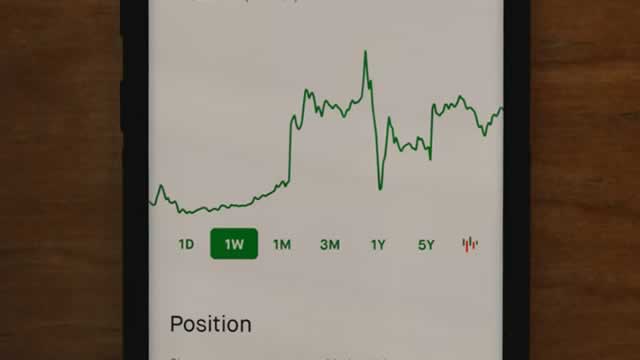Energy Services of America Corporation (ESOA): Q1 ’25 Earnings and Future Implications
In the first quarter of 2025, Energy Services of America Corporation (ESOA) reported earnings that showed a commendable 12% increase in revenue compared to the same period last year. This growth can be attributed to various factors, including successful business strategies and expanding market reach. However, the company faced challenges that led to declining margins.
Weather and Integration Costs
One significant factor contributing to the decline in margins was unfavorable weather conditions. ESOA operates in industries that are highly dependent on weather, such as oil and gas production. Extreme weather can lead to operational disruptions, increased costs for safety measures, and decreased productivity. In Q1 ’25, ESOA experienced a series of weather-related issues that negatively impacted its bottom line.
Another reason for the decline in margins was the integration costs from a recent acquisition. ESOA had acquired a smaller competitor in the previous quarter, which came with its own set of challenges. Integrating the new company’s operations, systems, and workforce required significant investment and resources, which impacted ESOA’s profitability in the short term.
Financial Metrics
Despite these challenges, ESOA reported impressive Return on Assets (ROA) and Return on Equity (ROE) in Q1 ’25. ROA measures the efficiency of a company in using its assets to generate profits, while ROE shows how effectively a company uses shareholder equity to generate profits. ESOA’s strong financial metrics are a testament to its ability to generate profits from its assets and shareholder investments.
However, these metrics are expected to decline in the coming quarters due to the factors mentioned above. The decline in profitability raises concerns about ESOA’s efficiency and ability to maintain these financial ratios in the face of operational challenges and increased costs.
Financial Health
Despite these concerns, ESOA’s financial health remains stable. The company has sufficient cash and receivables to cover its short-term debt obligations. This liquidity position is a positive sign and indicates that ESOA has the resources to weather any short-term financial challenges.
Long-term Debt and Interest Coverage
However, long-term debt and interest coverage are areas to watch. ESOA’s long-term debt has been increasing, and its interest coverage ratio (which measures a company’s ability to meet interest payments on its debt) has decreased. These trends could indicate financial stress and increased risk for investors.
Impact on Individuals
For individuals with investments in ESOA, the declining profitability and financial metrics could be a cause for concern. However, it’s important to remember that the stock market is forward-looking, and the current market price already reflects some of these concerns. If ESOA can successfully navigate the challenges it faces and return to profitability, the stock could be a potential buy at current prices.
Impact on the World
The impact of ESOA’s earnings report on the world at large is less direct. However, as a company that operates in the energy sector, ESOA’s financial performance can have indirect effects on the global economy. For example, if ESOA’s operational challenges lead to increased energy prices, this could have ripple effects on industries and consumers that rely on energy.
Conclusion
Energy Services of America Corporation’s Q1 ’25 earnings report showed a 12% revenue increase but declining margins due to weather and integration costs from a recent acquisition. Despite impressive ROA and ROE, these metrics are expected to decline, raising concerns about the company’s efficiency and profitability in the coming quarters. ESOA’s financial health remains stable, but long-term debt and interest coverage are areas to watch. For individuals with investments in ESOA, the declining profitability and financial metrics could be a cause for concern, but the stock market may already be pricing in these concerns. The impact on the world is less direct but could include indirect effects on the global economy through energy prices.
- ESOA reported a 12% revenue increase in Q1 ’25
- Declining margins due to unfavorable weather conditions and integration costs from a recent acquisition
- Impressive ROA and ROE, but expected to decline
- Financial health remains stable, but long-term debt and interest coverage are areas to watch
- Impact on individuals: concerns for investors with ESOA stock
- Impact on the world: indirect effects on the global economy through energy prices





